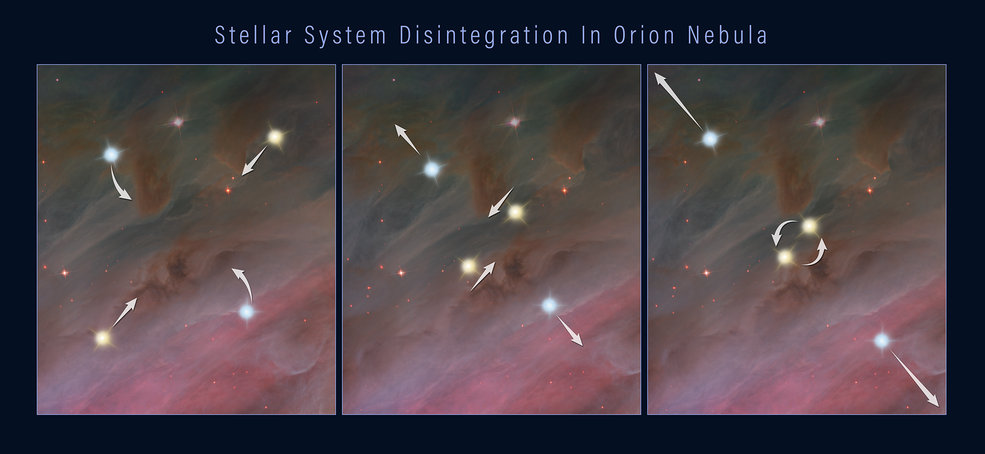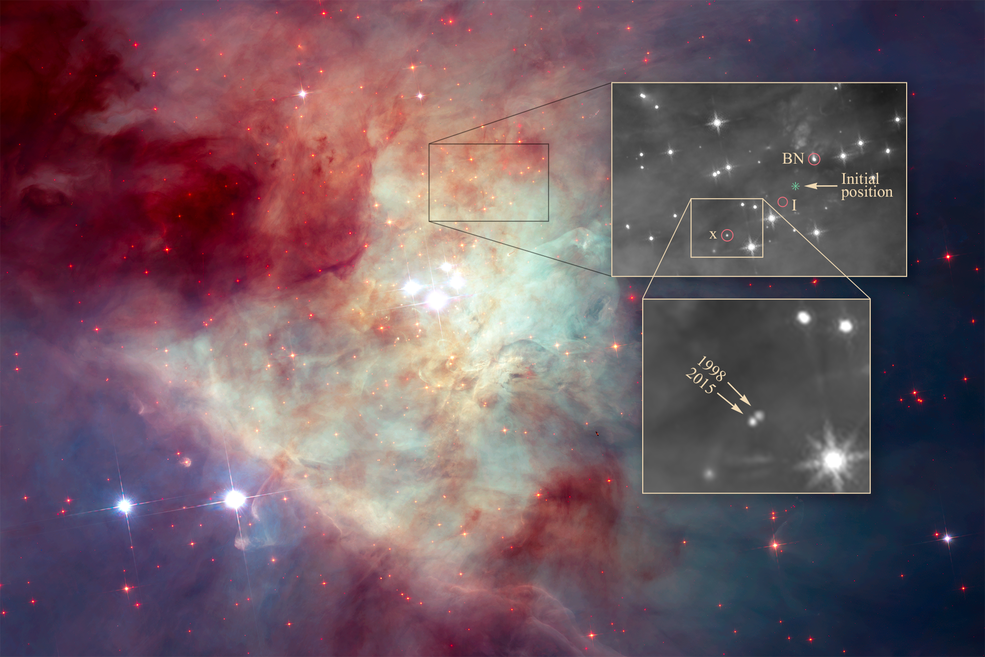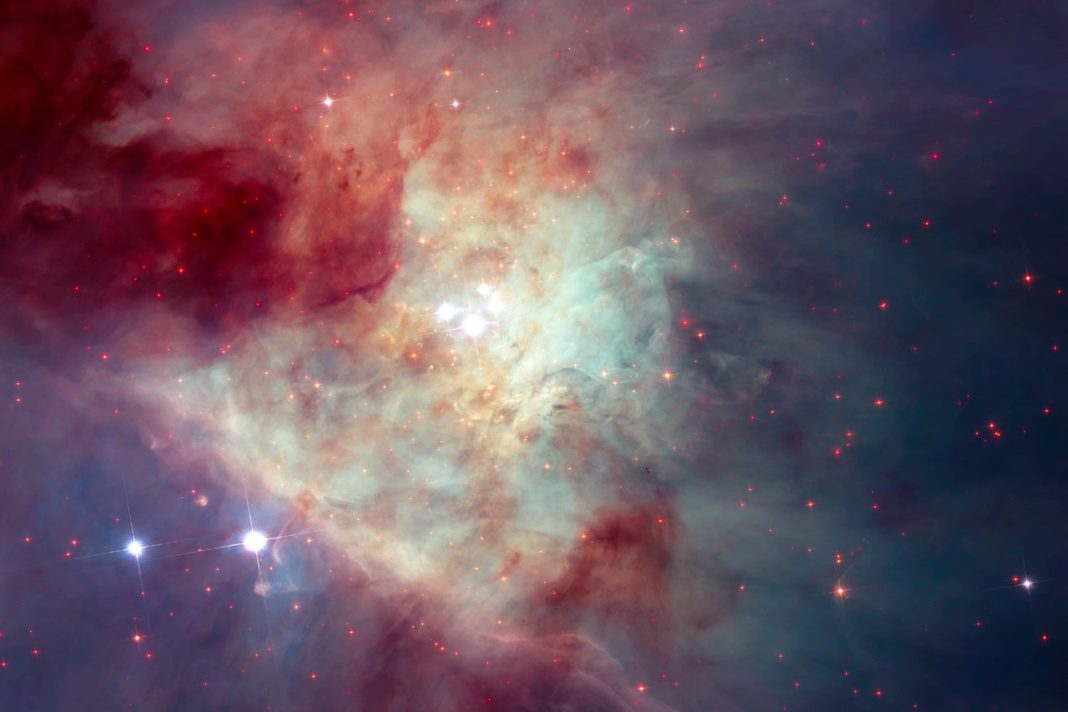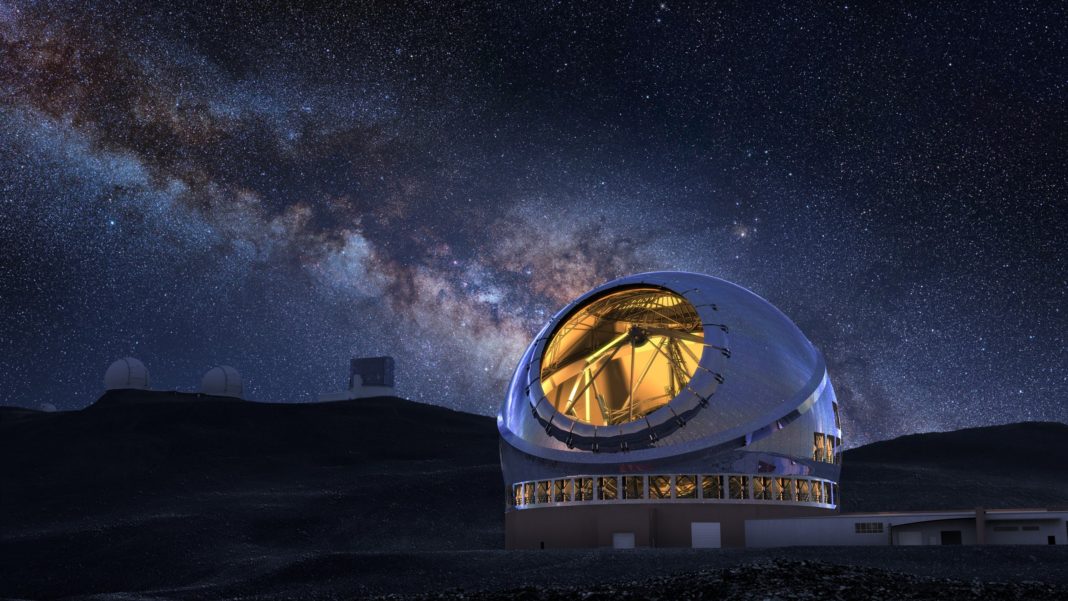A new mosaic image of the Orion Nebula complex has been created with thanks to the Almighty Hubble Space Telescope. This already famous, large star formation is situated around 1,400 light-years from Earth, and with thanks to discovery, it’s about to get even more exposure. While astronomers were busy creating the image of the Orion Nebula they may have just solved a cosmic puzzle that dates back over 500 years when a multiple-star system in the complex broke apart.
Three stars that scientists reckon were part of the same star system when it first broke up all those years ago were all ejected in different directions. Two of those stars were traced and had been previously observed, but scientist figured the third to be a runaway star – until now. “The new Hubble observations provide very strong evidence that the three stars were ejected from a multiple-star system. Astronomers had previously found a few other examples of fast-moving stars that trace back to multiple-star systems, and therefore were likely ejected. But these three stars are the youngest examples of such ejected stars. They’re probably only a few hundred thousand years old. In fact, based on infrared images, the stars are still young enough to have disks of material leftover from their formation”, stated Kevin Luhman of Penn State University and lead researcher on the project.”

Credits: NASA, ESA, and Z. Levy (STScI)

Credits: NASA, ESA, K. Luhman (Penn State University), and M. Robberto (STScI)
It was Hubble’s infrared abilities that enabled the astronomers to make their observations and look behind the Orion Nebula’s gas and dust clouds. The European Space Agency (ESA) said that among the stars that were spotted, astronomers viewed one that was moving at around 200,000 kilometers an hour, which is thought to be the runaway star from the original system that broke up some 540 years ago. But, until further observations have been made, that’s still speculation for the moment.
More News to Read











